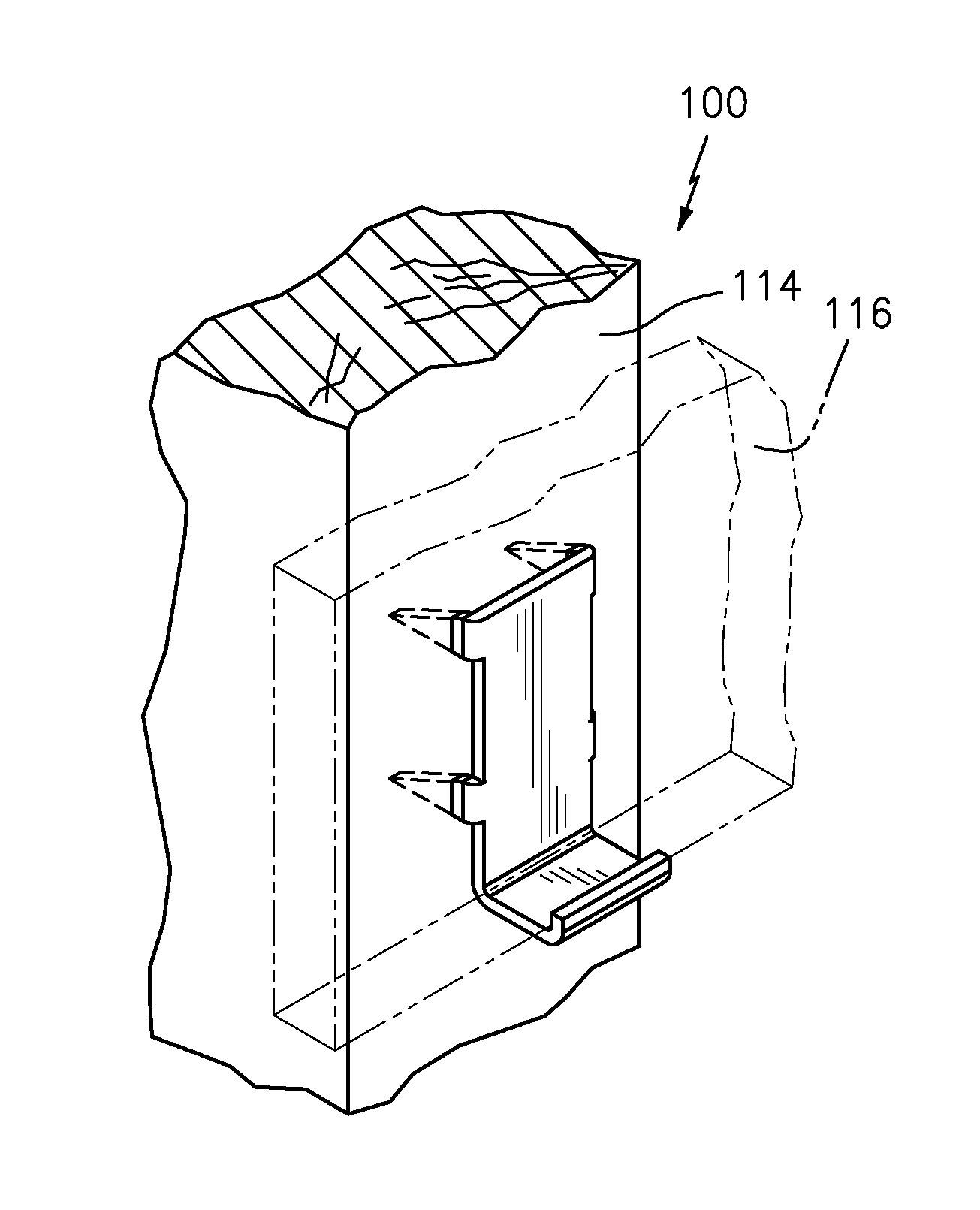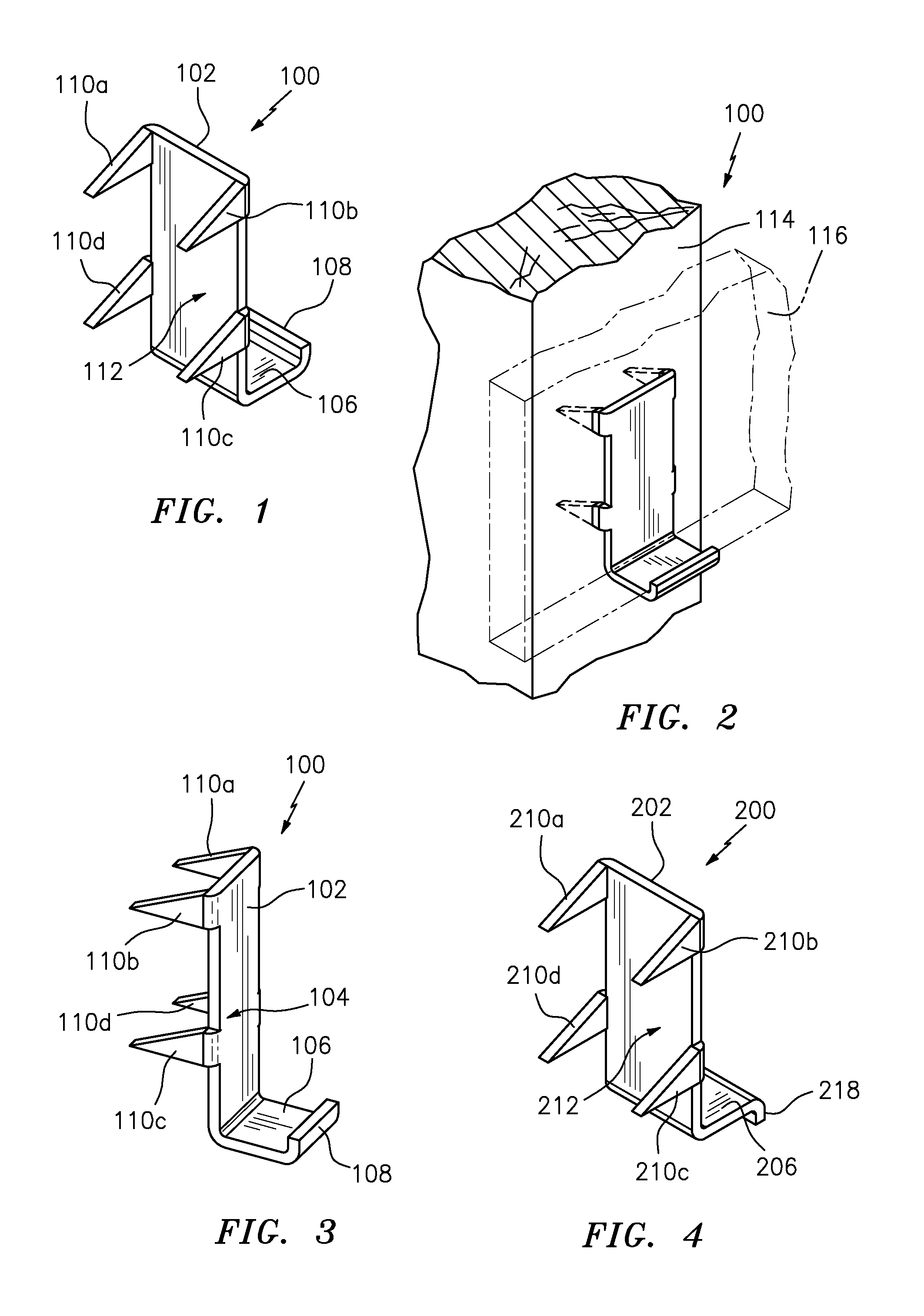Method of supporting drywall
a technology of supporting tools and drywall, which is applied in the field of drywall, can solve the problems of tiring and awkward fastening of sheets to horizontal, vertical or angular studs, joists, rafters or trusses, and many though are cumbersome and expensive, and large and cumbersome in its siz
- Summary
- Abstract
- Description
- Claims
- Application Information
AI Technical Summary
Benefits of technology
Problems solved by technology
Method used
Image
Examples
embodiment 100
[0027]FIGS. 1-3 depict a preferred embodiment 100 of the “STUD HUGGER”. As shown, Applicant's preferred device 100 is generally “J”-shaped. It is preferably made of metal, but could be made in plastic.
[0028]The preferred embodiment 100 comprises: a vertical stem 102 having a flat front side 104; a flat bottom 106, integral with and substantially perpendicular to the stem 102; and an upturned lip 108, integral with the bottom 106 and substantially parallel to stem 102. While the preferred lip is substantially perpendicular to the bottom 104, it alternatively can be an acute angle relative to bottom 106. Tapered spikes (a.k.a. brads or teeth) 110a, 110b, 110c, 110d are integral with and protrude from a backside 112 of the stem 102. The spikes are equally spaced apart, with: spikes 110a, 110d at one edge of the backside 112; spikes 110b, 110c at another edge of the backside; and spikes 110a, 110b adjacent respective corners of the backside. Upon hammering the spikes 110a, 110b, 110c, 1...
embodiment 200
[0031]FIG. 4 depicts an alternate embodiment 200 of the STUD HUGGER. Its structure is virtually identical to the preferred embodiment. Identical elements in FIG. 4 have the prefix 200. For example, the vertical stem 102 in FIGS. 1-3 is denoted by 202 in FIG. 4. The only difference between the two embodiments is the lip 218 is downturned, not upturned, in FIG. 4.
[0032]Applicant's invention can be thought of as a method of temporarily supporting drywall comprising the following sequential steps:[0033]a. hammering a flat front side of a vertical stem of a (preferably J-shaped) support tool to drive a plurality of spikes on a backside of the stem into a wall stud, whereby the tool is locked in place without having to use any nail or screw;[0034]b. supporting a drywall sheet within a lipped shelf of the tool, wherein a flat portion of the shelf is integral with, and extends substantially perpendicular to, one end of the stem; and[0035]c. attaching the entire drywall sheet to the wall stu...
PUM
 Login to View More
Login to View More Abstract
Description
Claims
Application Information
 Login to View More
Login to View More - R&D
- Intellectual Property
- Life Sciences
- Materials
- Tech Scout
- Unparalleled Data Quality
- Higher Quality Content
- 60% Fewer Hallucinations
Browse by: Latest US Patents, China's latest patents, Technical Efficacy Thesaurus, Application Domain, Technology Topic, Popular Technical Reports.
© 2025 PatSnap. All rights reserved.Legal|Privacy policy|Modern Slavery Act Transparency Statement|Sitemap|About US| Contact US: help@patsnap.com


